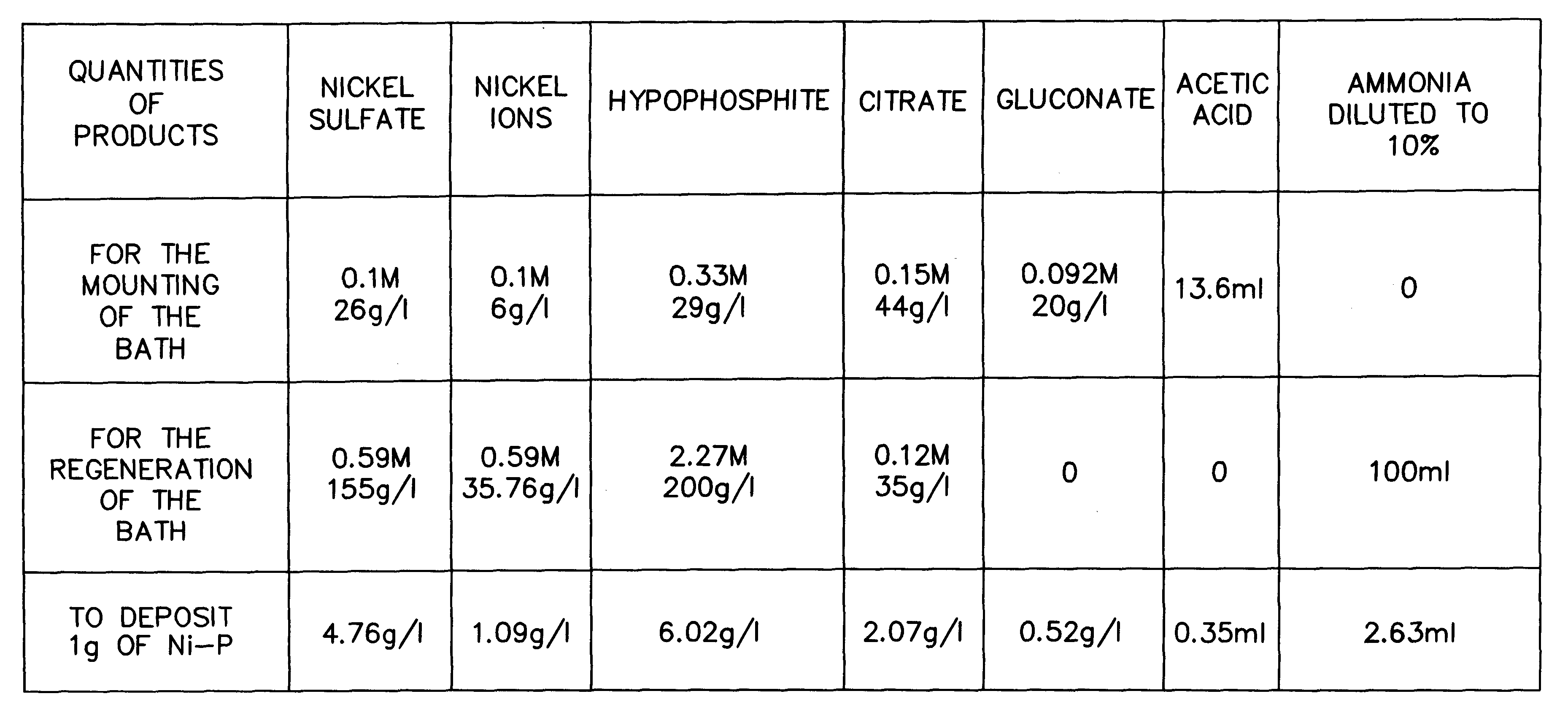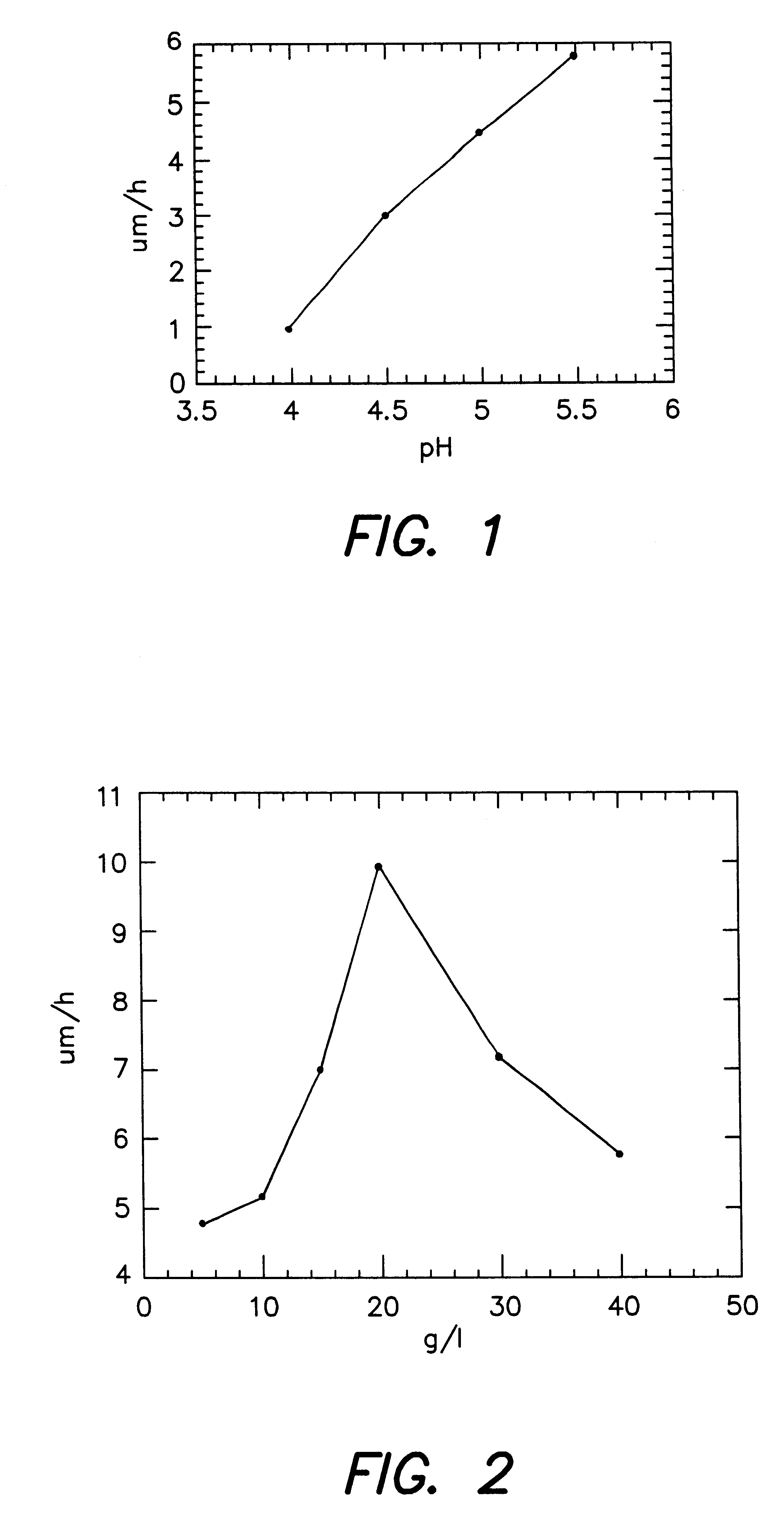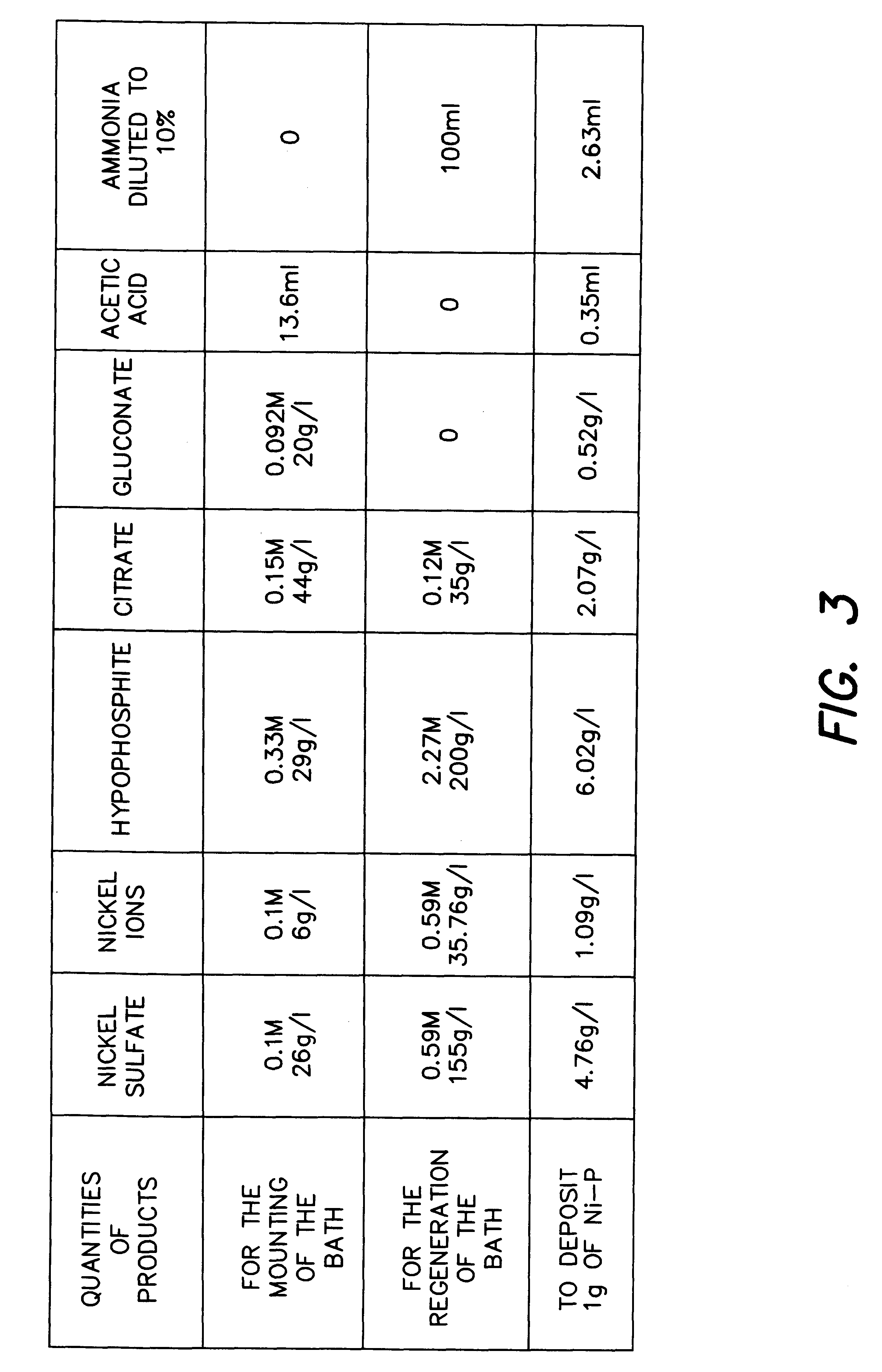Self-catalytic bath and method for the deposition of a nickel-phosphorus alloy on a substrate
a self-catalytic bath and nickel-phosphorus alloy technology, which is applied in the direction of liquid/solution decomposition chemical coating, filter regeneration, coating, etc., can solve the problems of reducing the bath lifetime, difficult to create the conditions for making deposits, and limited use of gluconates
- Summary
- Abstract
- Description
- Claims
- Application Information
AI Technical Summary
Benefits of technology
Problems solved by technology
Method used
Image
Examples
Embodiment Construction
To measure the resistance to corrosion, trials were carried out in a medium with 3% NaCl and this resistance was assessed by measuring the resistance to polarization by electrochemical impedance. The samples tested were substrates on which deposits of Ni--P with a thickness varying from 6 to 8 .mu.m had been made. The composition of Ni--P alloy was determined by dispersion of energy x and the surface condition was observed by means of a scanning electron microscope.
The deposit contains 13% by weight of phosphorus and is homogenous. The alloy has a nodular appearance and has no cracks. Observation with the naked eye shows that the coatings are shiny and less uneven than those obtained with the presently used techniques. Their hardness is in the range of 550 Hv.
The films of Ni--P alloy deposited are amorphous and constitute a non-crystalline matrix in which crystalline nickel inclusions over-saturated with phosphorus are incorporated. The high phosphorus content limits the quantity of...
PUM
| Property | Measurement | Unit |
|---|---|---|
| voltage | aaaaa | aaaaa |
| speed | aaaaa | aaaaa |
| speed | aaaaa | aaaaa |
Abstract
Description
Claims
Application Information
 Login to View More
Login to View More - R&D
- Intellectual Property
- Life Sciences
- Materials
- Tech Scout
- Unparalleled Data Quality
- Higher Quality Content
- 60% Fewer Hallucinations
Browse by: Latest US Patents, China's latest patents, Technical Efficacy Thesaurus, Application Domain, Technology Topic, Popular Technical Reports.
© 2025 PatSnap. All rights reserved.Legal|Privacy policy|Modern Slavery Act Transparency Statement|Sitemap|About US| Contact US: help@patsnap.com



